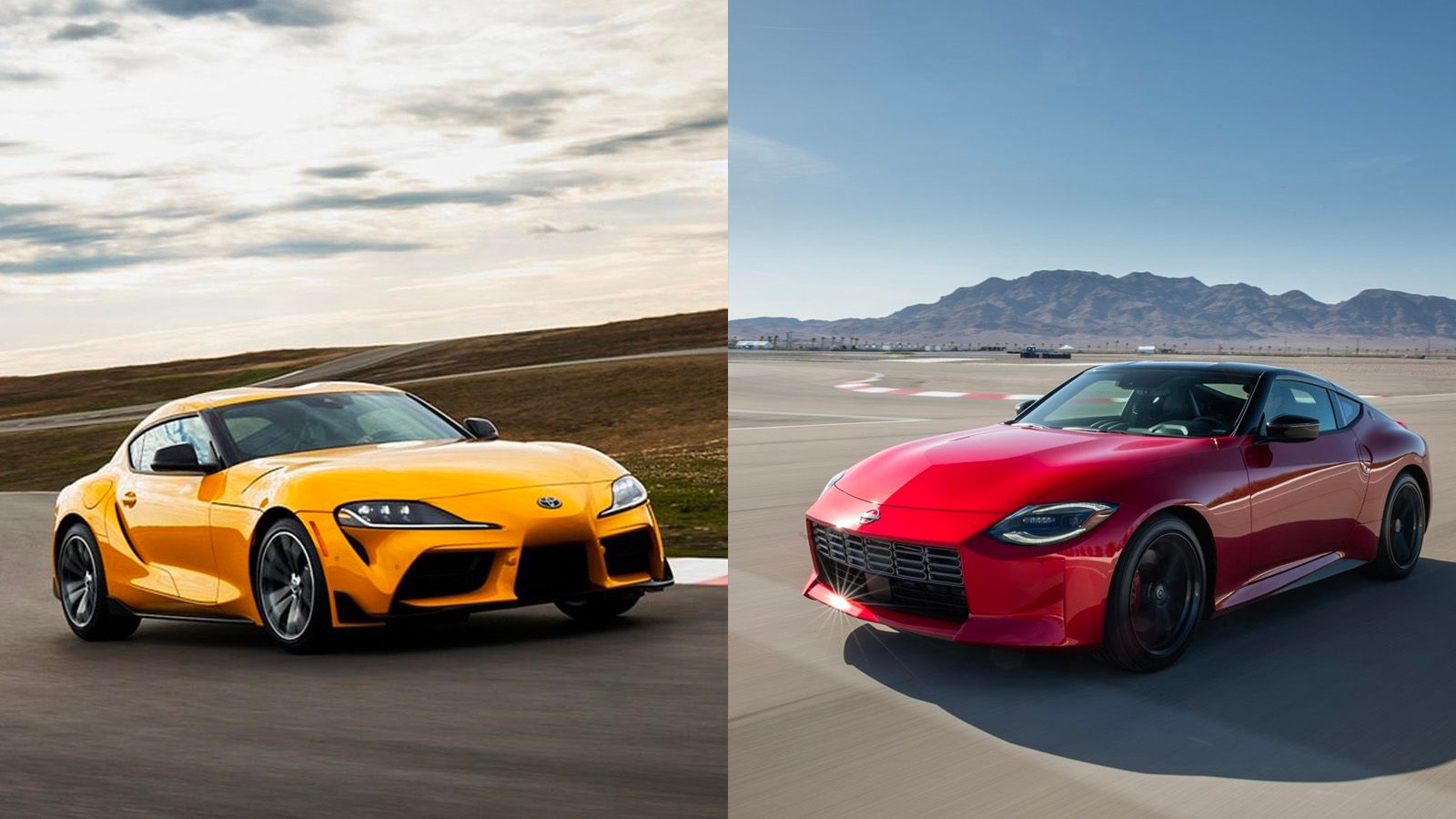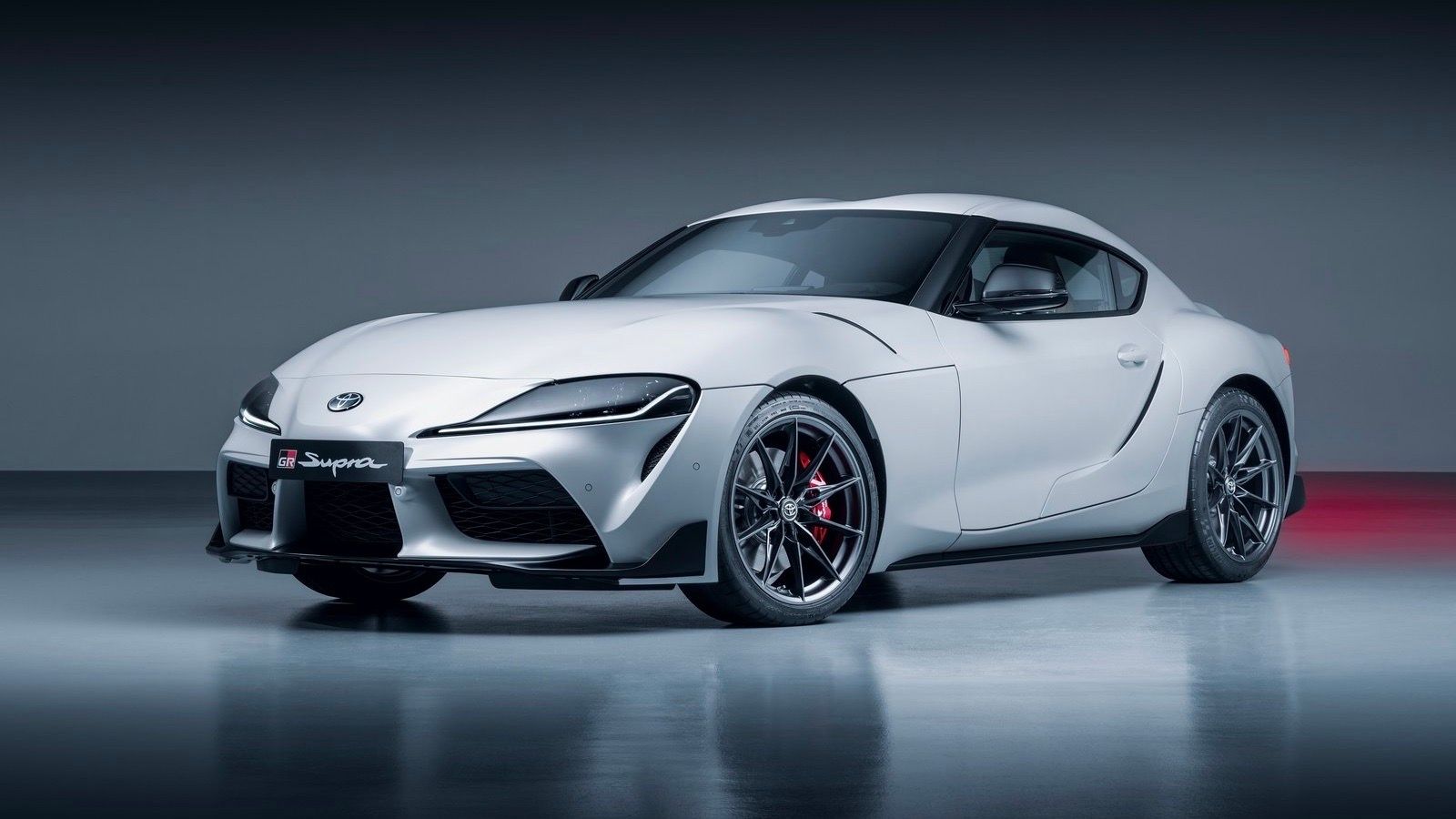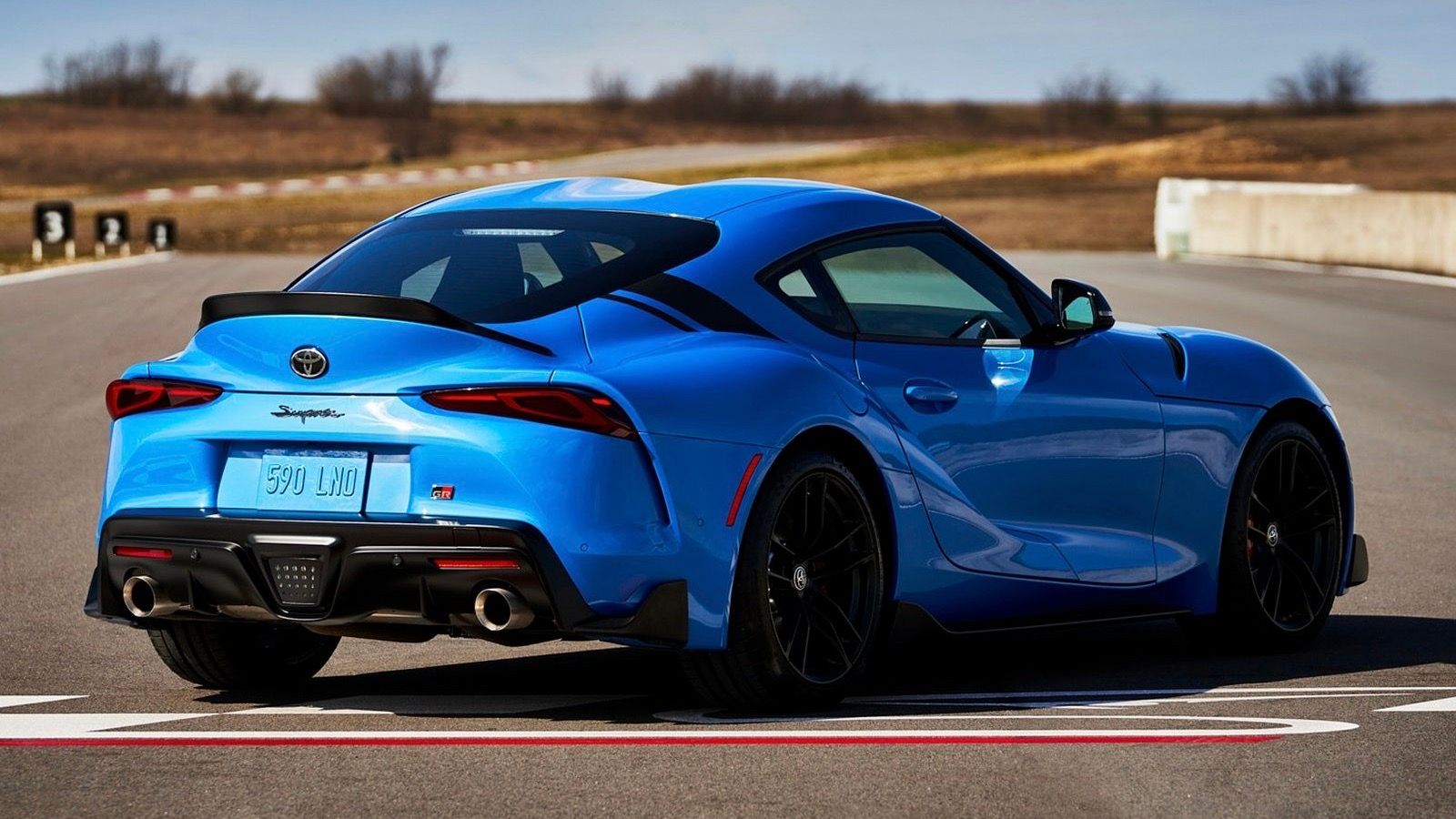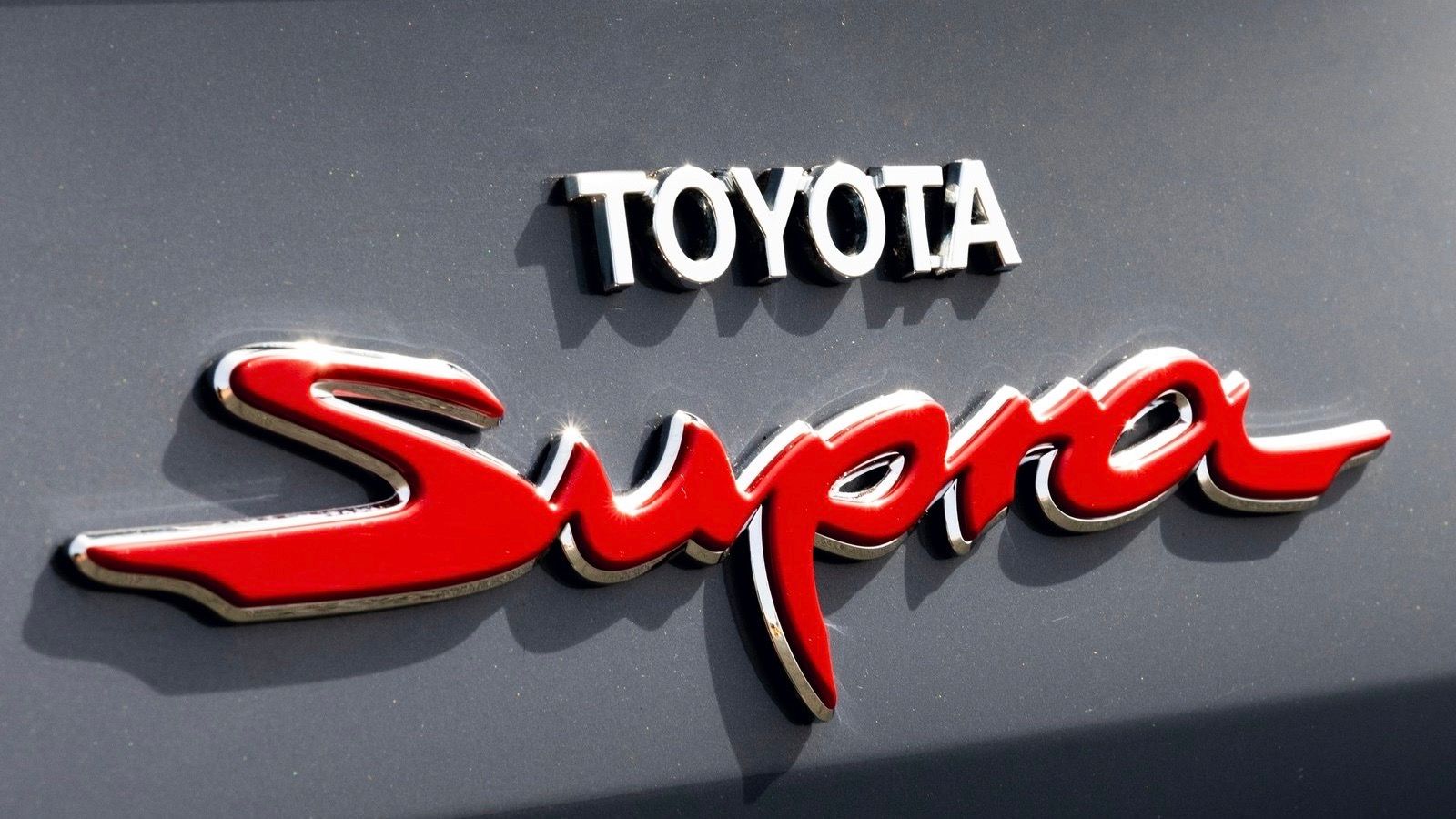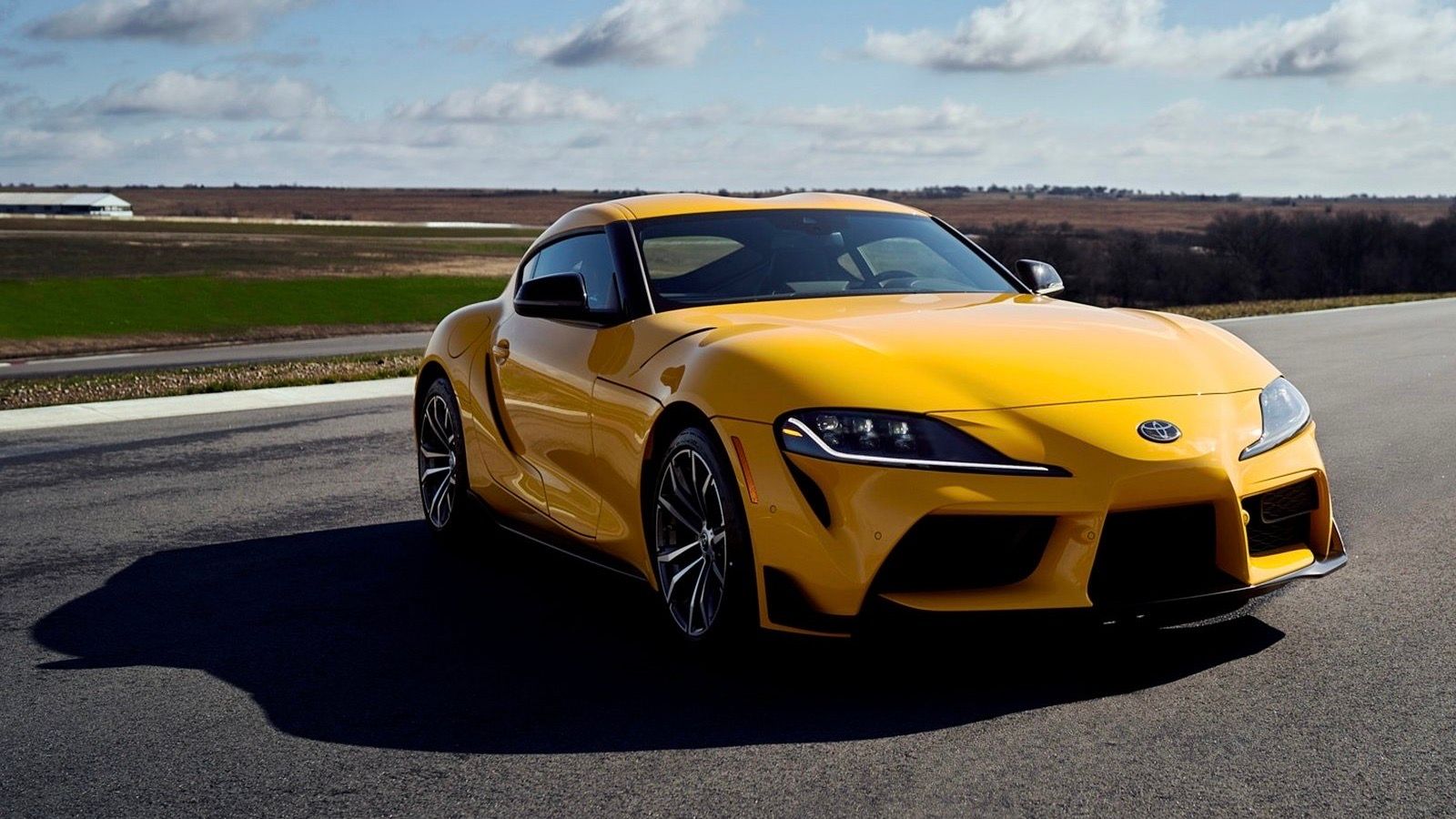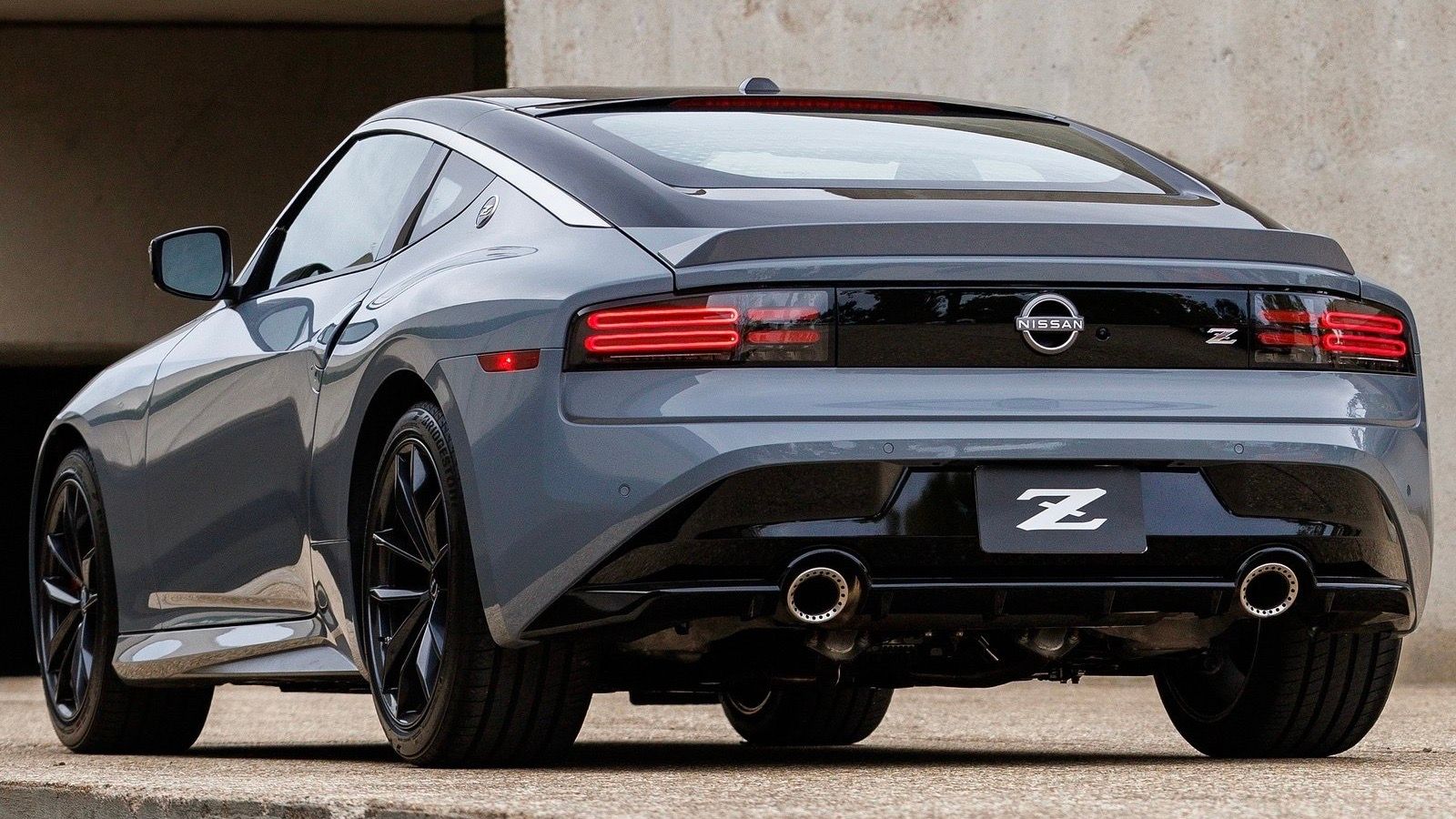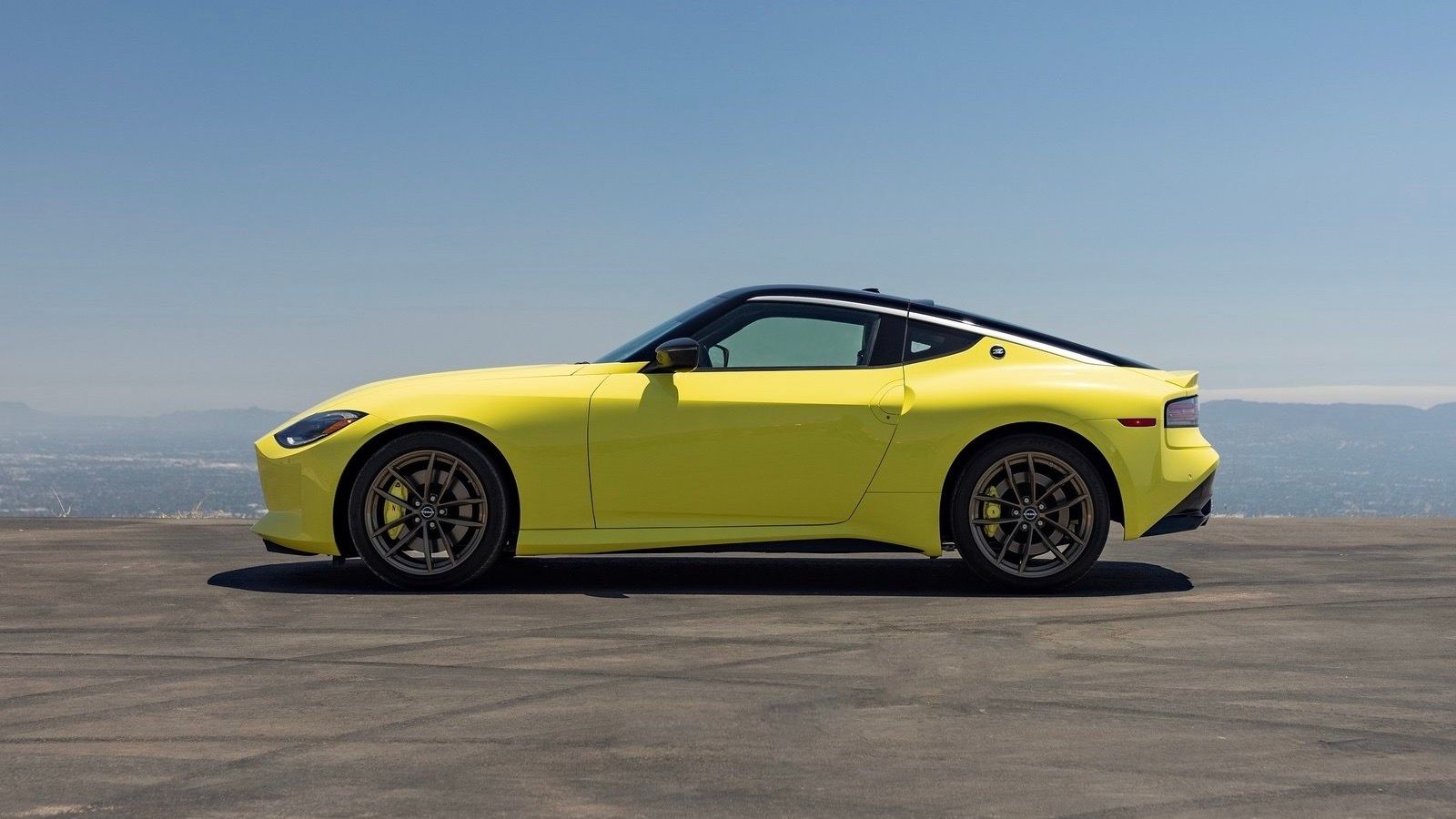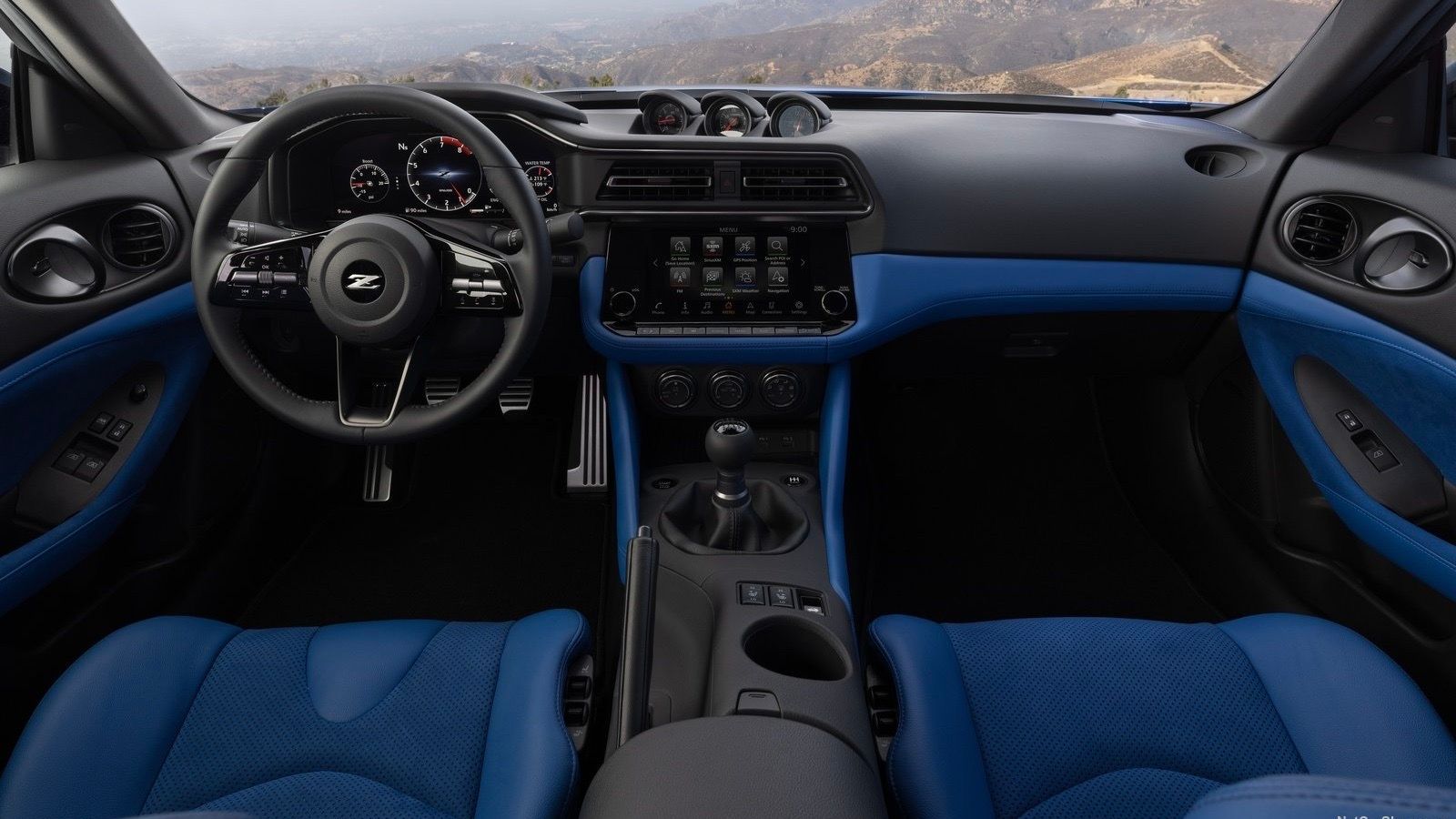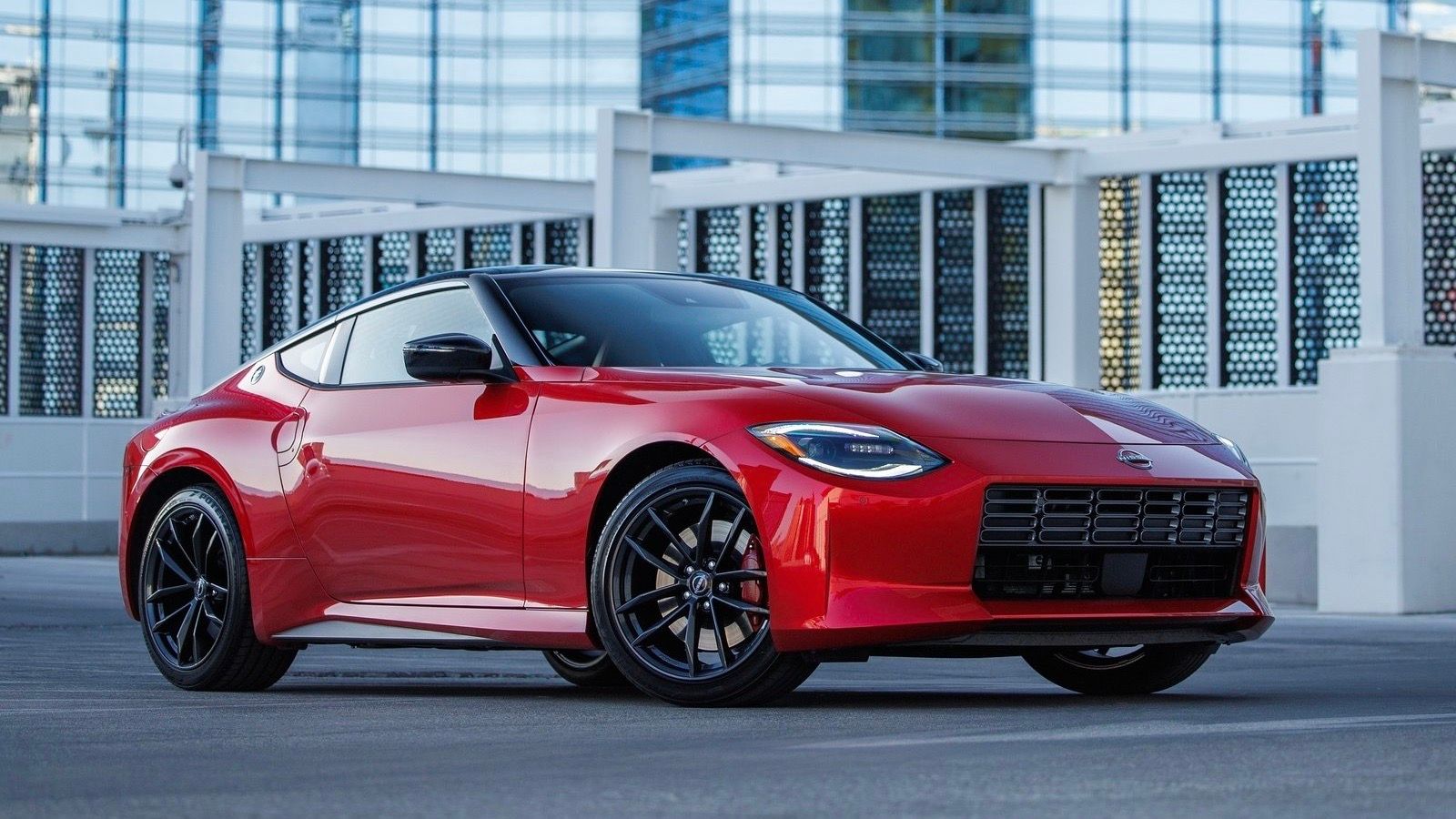Muscle cars exist outside the Wild West. Two of Japan’s strongest examples are the new Nissan Z and Toyota Supra. In 1969 Nissan first launched the Z, known in Japan as the Fairlady Z. After a disagreement with Yamaha, Nissan partner on the original project, Nissan ultimately scrapped the plans with the engineering company and launched their own version of the Fairlady Z powered by a 2.0-liter SOHC straight-six.
Yamaha then took their plans to Toyota who then launched the 2000GT with Yamaha’s DOHC engine that Nissan originally denied. Nearly a decade later, in 1978, Toyota launched its own sports car in the form of the Supra, a car that was heavily based on Toyota’s own Celica. The Supra was essentially the continuation of Toyota’s straight-six sports car, and ultimately gained more popularity, notably in later generations like the MK4.
Presently, both of these bold two-seaters fight on to be the epitome of Japanese refinement, and although they both are not without their flaws, they express Toyota and Nissan’s commitment to the simple act of having fun. Punchy engines, swift handling, and fluid body designs set these two apart from nearly any crowd. While Nissan has grown up a bit, and the Toyota has its identity crisis, they subtly harken back to their roots both visually, and on paper. Here are five reasons the Toyota Supra could be the superior sports car experience, and five reasons the Nissan Z might be the more logical sporty GT choice.
10 BMW Power is Actually a Good Thing
When Toyota set out designing its new Supra, an inline-6 was a must. Without having to develop a whole new engine architecture, they decided to turn to the ones who do it best, BMW and its standout B58 3.0 liter turbocharged inline-6. This isn’t a first for Toyota, as they collaborate well with others (think of Subaru’s involvement with the GT86/BRZ twins).
The simple fact is Toyota didn’t want to go through the trouble of developing an all-new straight-six engine that would likely only be applicable to a car like the Supra. The good news is BMW’s B58 is an exemplary straight-six and by far the industry standard. In the Supra it produces an alleged 382 horsepower and 368 pound-feet of torque, but history shows those numbers to be wildly conservative. Toyota ensured you get the full Supra inline-six experience with plenty of noise and turbo sounds to match the power.
9 Supra Has More Muscular Style
While Nissan chose to go with a mix of clean-line and retro design, Toyota woke up and chose violence. The A90 Supra’s exterior is a visual sensory overload. Clearly, based on Toyota’s radical-looking FT-1 concept, the production car retains much of that car’s design elements but is wrapped in a manufacturing-friendly package.
There are subtle A-80 generation styling hints, especially the headlight and taillight designs which both appear as a refinement, but with sharper, edgier elements. The whole body combines a graceful mix of organic bulbous panels and aggressive intakes with angular lines. It’s more exaggerated than the Z, but then again, that’s kind of the point of these cars. The new Supra looks every bit as wild as you might imagine the car is to drive.
8 A More Iconic Name
Supra, although popular with very serious enthusiasts early on, didn’t become the icon that it is now until its appearance as the hero car in The Fast & The Furious. Since then, Supra's popularity has exploded and the car remains an automotive legend re-establishing itself as a sports car legend. The Toyota Supra name comes with the notion of upper-echelon speed and intimidating performance. It is known as the supercar beating, highly tunable straight-six monster of a car from Japan amidst the other, seemingly pedestrian JDM sports cars. Supra, now more than ever, has to be something special, and special it is!
7 The Supra is an All New Car
Unlike the new Nissan Z, which is essentially a heavy refresh of the 370Z chassis, the Toyota Supra was built as a ground-up design. Yes, underneath is a BMW Z4, but it doesn’t take away the fact that it is an all-new car, with components that separate Toyota and Nissan by over a decade. To be honest, it’s not like the Supra doesn’t benefit from the Z4’s BMW-ness, in fact, quite the opposite, many see it as an opportunity to experience some of the niceties and refinement of BMW, but in a more enthusiastic way.
Toyota was very specific about separating the Supra from the Z4 in ways that make the car really it's own. We can be glad it exists and through collaboration with BMW, the Toyota team has built upon the Supra name in an ironic, but fitting way for a car with the name that is so widely associated with tuning, and customization. By comparison, the Nissan Z just doesn’t have the same pop culture pizzazz.
6 Supra Has Track Focused Components
Solid brakes, well-tuned suspension, and a slick-shifting transmission are all essential to track day success. While the new Nissan Z’s components have all been upgraded, they can’t match the beefier components of the Toyota Supra. Both cars thankfully offer a manual transmission, however, most people will inevitably opt for the auto, and Nissan’s new nine-speed box is simply no match for the ZF eight-speed found in the Toyota.
There is a reason ZF’s 8-speed has become the industry standard, it’s absolutely amazing rivaling the best automatic gearboxes out there. Nissan missed the mark on this key component, by equipping the Z with a clunky by comparison, nine-speed that just can’t match the ZF box’s speed or smoothness.
5 The Nissan Z Is More Of A Blast From The Past
Rad, would be the best way to describe the new Nissan Z’s styling. The Radwood era is defined as cars that emerged from the 1980s and 1990s, this would include cars such as the iconic Nissan 300ZX with its twin-turbo V-6. One look at the new Z’s taillights, and you’ll be driving down memory lane in an instant. The new Z’s rear end looks like it could be a refresh of the 300ZX’s, which in itself is pretty rad.
The front of the Z is pure 1969 Fairlady Z but beautifully modernized. The car is beautiful any way you look at it. The twin-turbo V-6 is back too, this time putting out a bit more power, 400 horsepower to be exact, with 350 foot-pounds of torque. Thanks to Nissan’s refinement of this engine over time, it is now as smooth as a V-6 could be with a heavy-hitting punch from the mid-range and up with precise control of the boost thanks to a trick turbo speed sensor.
4 The Z is a True Japanese Sports Car
Unlike the BMW-based Toyota Supra, the Nissan Z is all Nissan making it a real JDM hero. Nissan went through the 370Z and improved upon many aspects individually to hone the Z’s capabilities to a point that brings it up to today’s standards and then some. The idea of taking a well-built machine and refining it over the course of years is a Japanese engineering trend that, for Nissan, has clearly paid off.
The new Z is a suave, sporty GT when you need it to be, but a sharp, powerful performance vehicle when you want it to be. Toyota spent a fair bit of time turning the BMW Z4 into something they could be proud of and should be, however, there are BMW-ish things that will always remain, removing some of the JDM-ness out of the Supra.
3 A More Exciting Interior
Although materials may not match the beautifully appointed Supra, the Nissan Z’s cabin is certainly more exciting. For starters, you can option a bold blue interior theme which gives you blue seats and interior panels. It’s a visual feast that gives the Z an edge that is sure to resonate with drivers of these types of sports cars. The instrument display is also configurable with different layouts, some of which are oddly designed, but the options exist nonetheless. For the tech and visual-oriented, the Nissan Z will be a more exciting place to drive.
2 A More Well-Rounded Daily Driver
This matters. As unrefined as the old Z was, that underpins the new Z, Nissan has successfully refined the recipe with a buttery smooth 3.0-liter twin-turbo engine that doesn’t howl or bark like the last generation car, and certainly not like the popcorn-making Supra. The manual transmission has been refined, removing ambiguity within shifts.
The suspension is more GT-like, rather than being focused on hot lapping. To live with as a daily sports car, of which both the Toyota and Nissan are meant to be, ultimately it is the Nissan Z that could end up being the better daily driver. Nearly identical in every measurable size metric, it ultimately comes down to how these two drive back-to-back. Some may prefer the harder-edged Supra, while the easier-going Nissan Z might win the heart of more everyday drivers.
1 Aggressively Low Starting Price
The 2023 Nissan Z starts at $39,990 which represents a $4,050 starting price advantage over the Toyota Supra. That is considerable money savings seeing how these cars two so closely compete, both on paper, and in the real world. Don’t forget the entry-level Toyota Supra comes with a 2.0 liter inline-4 engine, whereas the Z comes with the same 400 horsepower 3.0 liter V-6 no matter which trim level you choose.
To compete directly with the Z, the least expensive 3.0-liter six-cylinder Supra starts at $53,000 meaning the actual price difference between similarly equipped Toyota Supras and Nissan Zs is over $13,000. The Most expensive Z, the Proto Spec six-speed manual, starts at $10 less than that $53,000 entry-level 3.0 liter Supra. Nissan is certainly playing their price game right and winning.

